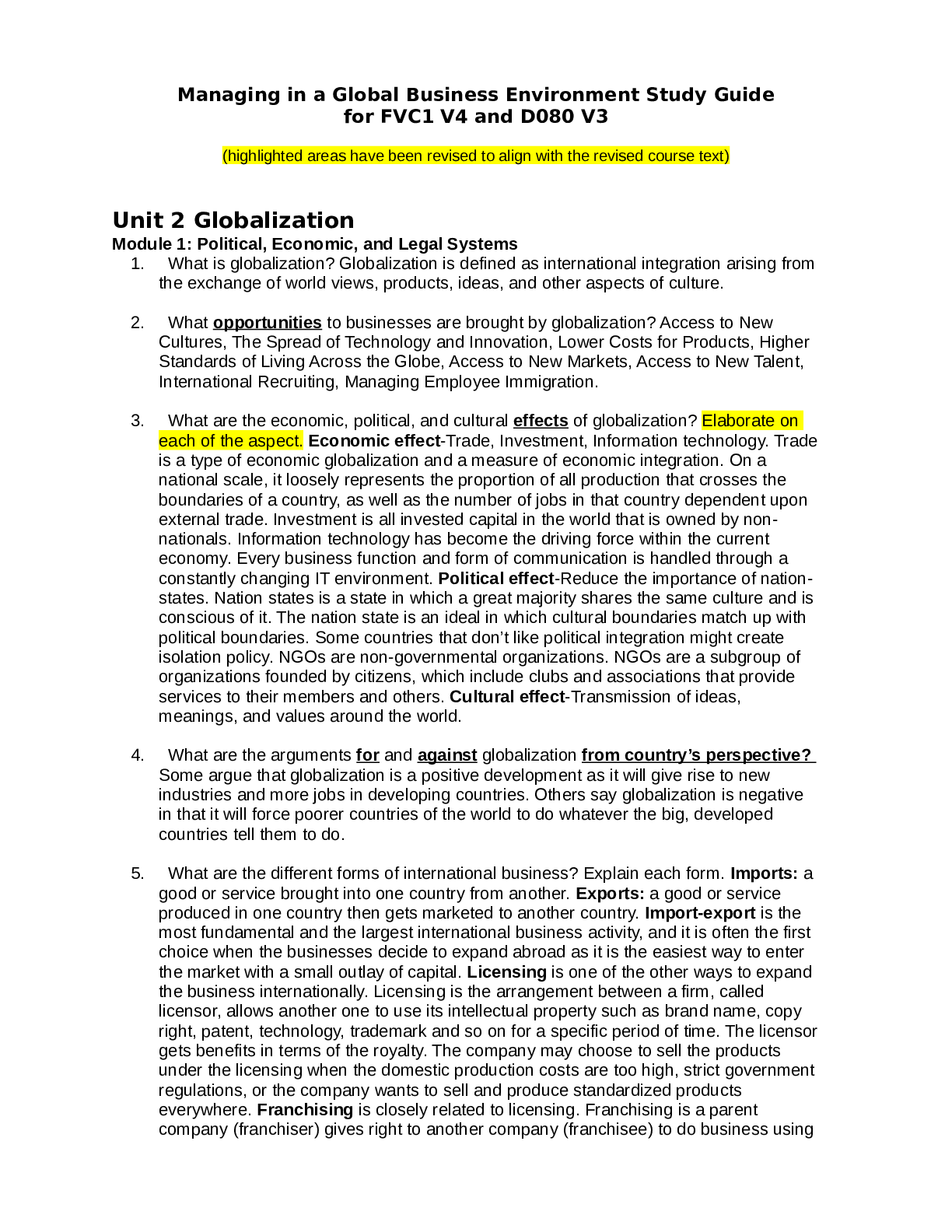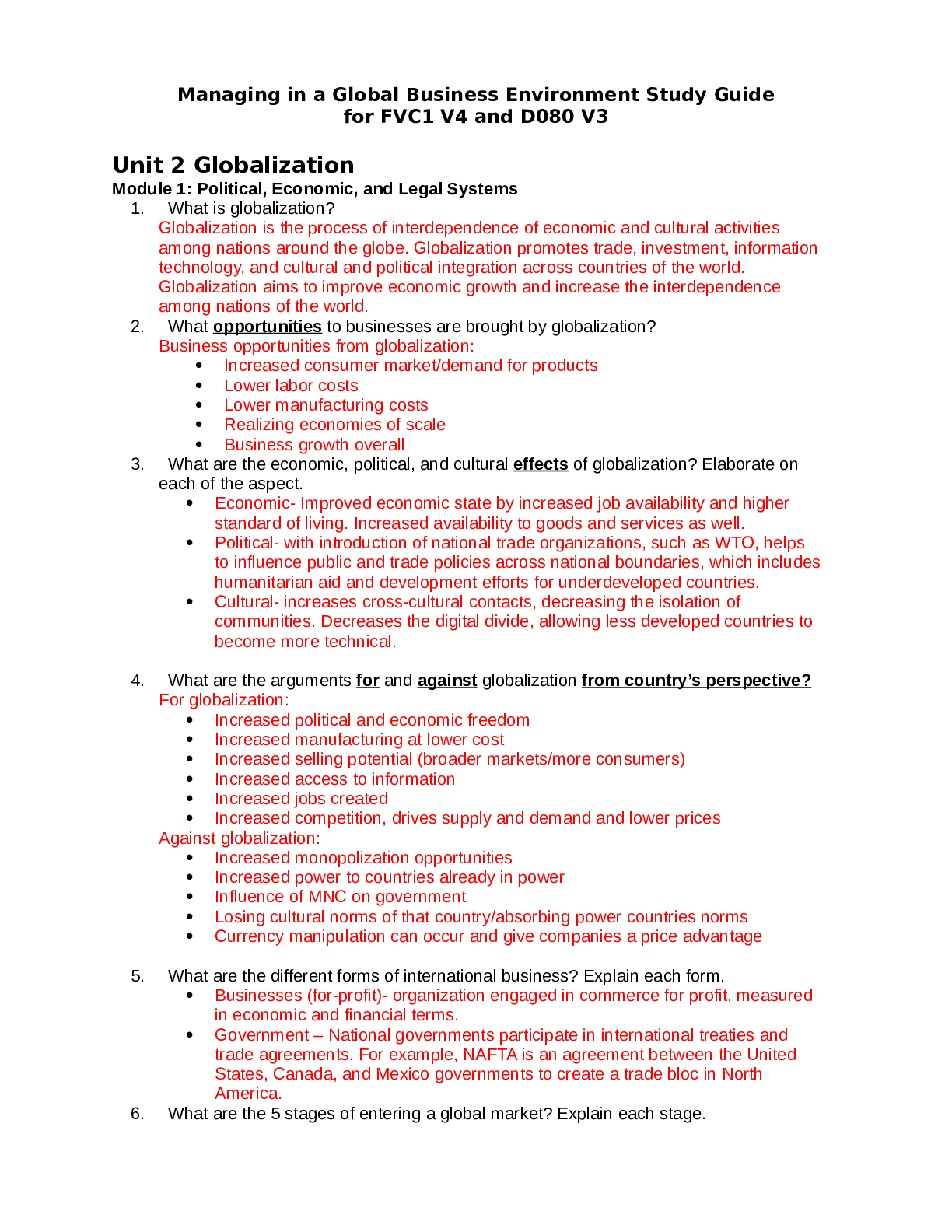*NURSING > QUESTIONS & ANSWERS > ACSM Exercise Physiologist Exam 2022; Study guide for ACSM Ex Phys certification. (All)
ACSM Exercise Physiologist Exam 2022; Study guide for ACSM Ex Phys certification.
Document Content and Description Below
ACSM Exercise Physiologist Exam 2022; Study guide for ACSM Ex Phys certification. FITT for Obese >>>>>F: ≥5 days/week (max. caloric expenditure) I: Mod-Vigorous Aerobic activity (Vig-desirable) ... T: Min. 30 min -totaling ≥150min/week (Progress to 60 min) intermittent 10 min. bouts OK **Vigorous activity is encouraged T: Aerobic physical activity (resistance/flexibility -healthy pop. guidelines) FITT-P for Hypertensive >>>>>F: Aerobic: Most/preferably every day Resistance: 2-3 days/week I: Mod-aerobic exercise RPE: 11-13 Resistance: 60-80% 1-RM T: 30-60 min of continuous or intermittent of 10 min. Resistance: 8-12 reps; 1 set T: Aerobic exercise is the main focus (walking, cycling, swimming) Progression:Guidelines for healthy Pop. Except pay attention to blood pressure and medications FITT for Coronary Heart Disease >>>>>F: 3-4 d/w (5-6 d/w Optimal) Resistance: 2 d/w I: 50-60% (75) symp-limited VO2max or HRR Resistance: 30-50% up to 60-80% of 1-RM T: 30 minutes Resistance: 12-15 reps, 1-3 sets T: Endurance training FITT for Diabetes mellitus >>>>>F: 3-7 days/week I: RPE: 11-13 (40-60%VO2R) -Intensity can be modified/increased based on individual T: Min: ≥150min/week (Moderate) Can be done in bouts of 10 minutes Additional Benefits seen with ≥300 min/week (Mod-Vigorous) T: Emphasis activities using large muscle groups -Rhythmic & continuous exercise Progression: Increase exercise Duration first. Then increase Intensity. Resistance Training is also beneficial in absence of contraindication FITT for Osteoarthritis >>>>>F: Aerobic: 3-5 days/week Resistance: 2-3d/w Flexibility (ROM) I: Low-moderate T: ≥150min/week or 10 min bouts as tolerated T: Aerobic Exercise -low impact Progression: Should be gradual and tailored individually as toleratedFITT for Cancer >>>>>F: Aerobic: 3-5 days/week Resistance: 2-3 d/w Flexibility: Can be done daily (even during treatment) I: Highly Variable during treatment; RPE; Slow Progression T: Aerobic:Short bouts several times/day during treatment Survivors without exacerbation can follow healthy population guidelines Resistance: 8-12 reps; 1 set T: Aerobic -prolonged (walking, cycling swimming) Progression: Slow; Avoid fatigue FITT for Dysplidemia >>>>>≥5days/week (maximize caloric expenditure) I: 40-75%VO2R T: 30-60 min 50-60 min -to promote weight loss Can be done in bouts of 10 minutes if necessary T: Aerobic Activities Resistance/flexibility guidelines for healthy pop. can be followed in absence of contraindications FIbromyalgia >>>>>F: 2-3 days/week (Progress to: 3-4d/w) Resistance: 2-3d/w Flexibility: 1-3 d/w I: <30% VO2R or HRR (Progress to: <60%) Resistance: 50-80% of 1-RM (Decrease if pain is present) Flexibility: Active gentle ROM T: 10 min increments totaling 30 min (Progress to: 60 min) Resistance: Strength -3-5 reps; 2-3 sets Endurance-10-20 reps; 2-3 sets Flexibility: Hold stretch 10-30 sec (progress to 60 sec) T: Low-impact/non-weight bearing activities (Water exercise, walking, cycling) Resistance: Elastic bands, cuffs/ankle weights, weight machines Flexibility: Elastic bands, non-weight-bearing FITT for Asthma >>>>>F: 2-3 days/week I: Aprox. At the lactate threshold (anaerobic threshold) T: 20-30 min/day T: Aerobic activity (Avoid chlorinated pools) Resistance/flexibility FITT for COPD >>>>>F: Aerobic: 3-5 days/week I: Light and Vigorous (as tolerated-but encouraged) T: Only a few min. may be tolerated; Interval training is successful with rest periods T: Walking and/or cycling Arteriosclerosis >>>>>Hardening of arteriesAtherosclerosis >>>>>-(type of arteriosclerosis) -Buildup of waxy plaque on the inside of blood vessels (plaque deposits that block the flow of blood) Impaired Fasting Glycemia >>>>>The body cannot regulate glucose as efficiently as it should be able to Fasting Blood Glucose >>>>>Blood test taken after a night of fasting to test blood glucose levels Dyspnea >>>>>Difficult or labored breathing, shortness of breath Tachycardia >>>>>Increased HR above 100 bpm Bradycardia >>>>>Decreased HR below 60 bpm Claudication >>>>>Pain, tired, or weak feeling in legs usually during activity, caused by too little blood flow Syncope >>>>>Temporary loss of consciousness Ischemia >>>>>Inadequate blood supply ot a local area due to blockage of blood vessels to that area Osteoarthritis >>>>>Disease of the entire joint- cartilage, joint lining, ligaments and underlying bone Rheumatoid arthritis >>>>>immune system attacks your joints and causes inflammation to joints and organs Orthopnea >>>>>Discomfort in breathing that is relieved by sitting or standing in an erect position Emphysema >>>>>Lung disease that makes it hard to breathe Hypoglycemia >>>>>Low blood glucose below 70mg/dl Android obesity >>>>>Fat in trunk area Visceral Fat >>>>>Fat within abdominal cavity around internal organs Subcutaneous Fat >>>>>Fat stored directly under the skin Arrhythmia >>>>>Abnormal electrical impulses. Atrial fibrillation means blood does not fully leave left atrium. Ventricular fibrillation is more seriousHyperventilation >>>>>Rapid/deep breathing Angina pectoris >>>>>Result of myocardial ischemia cause by an imbalance between myocardial blood supply and oxygen demand Myocardial infarction >>>>>BLood flow to part of heart is blocked Myocardial ischemia >>>>>Lack of blood flow and oxygen ot heart Stroke >>>>>Blood flow to a part of the brain stops Hypertension >>>>>High BP Hyperlipidemia >>>>>High concentration of lipids in blood Peripheral pulses >>>>>Carotid and Radial artery Types of stretches >>>>>Ballistic: Repetitive bouncing, not ideal Dynamic: smooth movements gradually increasing ROM Active: Agonist muscle is working Static: Hold position at furthest ROM PNF: Contract-relax Plyometric: Maximize stretch-reflex of muscles Risk factors favorably modified by PA >>>>>Hypertension Cholesterol High blood sugar Lack of PA Obesity Cardiorespiratory fitness >>>>>Measure of how well your heart, arteries, veins, and lungs work together to transport oxygen to muscles. Then how well oxygen is absorbed and used in your muscles (based on capillary distribution at muscles and mitochondrial density-responsible for aerobic ATP synthesis) Body Composition >>>>>Reveals the relative proportions of fat and lean mass in the body. Men 10-22%, Women 20-32% Skinfold, BIA, BODPOD, Hydrodensity Flexibility >>>>>Limits of the muscuoskeletal unit Proprioceptors: the capacity of the neuromuscular system to inhibit the antagonists influences flexibility Muscle spindles >>>>>Respond to change in length Intrafusal fibers run parallel to extrafusal fibersStretch reflex >>>>>When a muscle spindle is stretched, the muscle spindles cause a reflex of the muscle Golgi tendon organ >>>>>Monitors tension in muscle Stimulation results in relaxation of muscle Muscular strength >>>>>Force of an external load on muscles. First neurological adaptation then muscle hypertrophy Hypertrophy versus hyperplasia of muscle >>>>> Muscle endurance >>>>>Low weight high reps. Avoid valsalva Type IIa fibers Absolute contraindication versus relative contraindication >>>>>Stress test should not be performed until condition is stabilized. May be tested only after careful evaluation of risk/benefit ration Absolute contraindication list >>>>>1. EKG change suggest recent MI, severe ischemia, or other significant cardiac event 2. Unstable angina 3. Uncontrolled cardiac arrhythmias causing symptoms 4. Sever symptomatic aortic stenosis 5. Symptomatic heart failure 6. Pulmonary embolus or infarction 7. Acute myocarditis or pericarditis 8. Suspected or know dissecting aneurysm 9. Acute systematic infection Relative contraindications list >>>>>1. Left main coronary stenosis 2. Moderate stenotic valvular heart disease 3. Electrolyte abnormalities 4. Hypertension >200/100 5. Tachycardia, bradycardia 6. Hypertrophic cardiomyopathy 7. Neuromuscular, musculoskeletal rheumatoid disorders exacerbated by ex. 8. High degree A-V block 9. Ventricular aneurysm 10. Uncontrolled metabolic disease 11. Chronic infectious disease 12. Mental/physical impairment Antianginals >>>>>Counters angina; used to treat angina pectoris Antihypertensives >>>>>Lowers bpAntiarrhythmias >>>>>Tachycardia, bradycardia: calcium-channel blockers or betablockers Bronchodilators >>>>>Open bronchiole tubes Hypoglycemics >>>>>lowers blood glucose levels Psychotrophics >>>>>Chemical, cross bbb and acts on CNS, results in changes in perception mood consciousness cognition and behavior Vasodilators >>>>>Relax smooth muscle in blood vessels Beta-blockers >>>>>REduces BP and work load Beta-receptor agonist >>>>>cause relaxation of bronchiolar smooth muscle (asthma) Calcium-channel blockers >>>>>lowers BP NSAIDs >>>>>increase bp ibuprofen, advil, motrin [Show More]
Last updated: 1 year ago
Preview 1 out of 9 pages
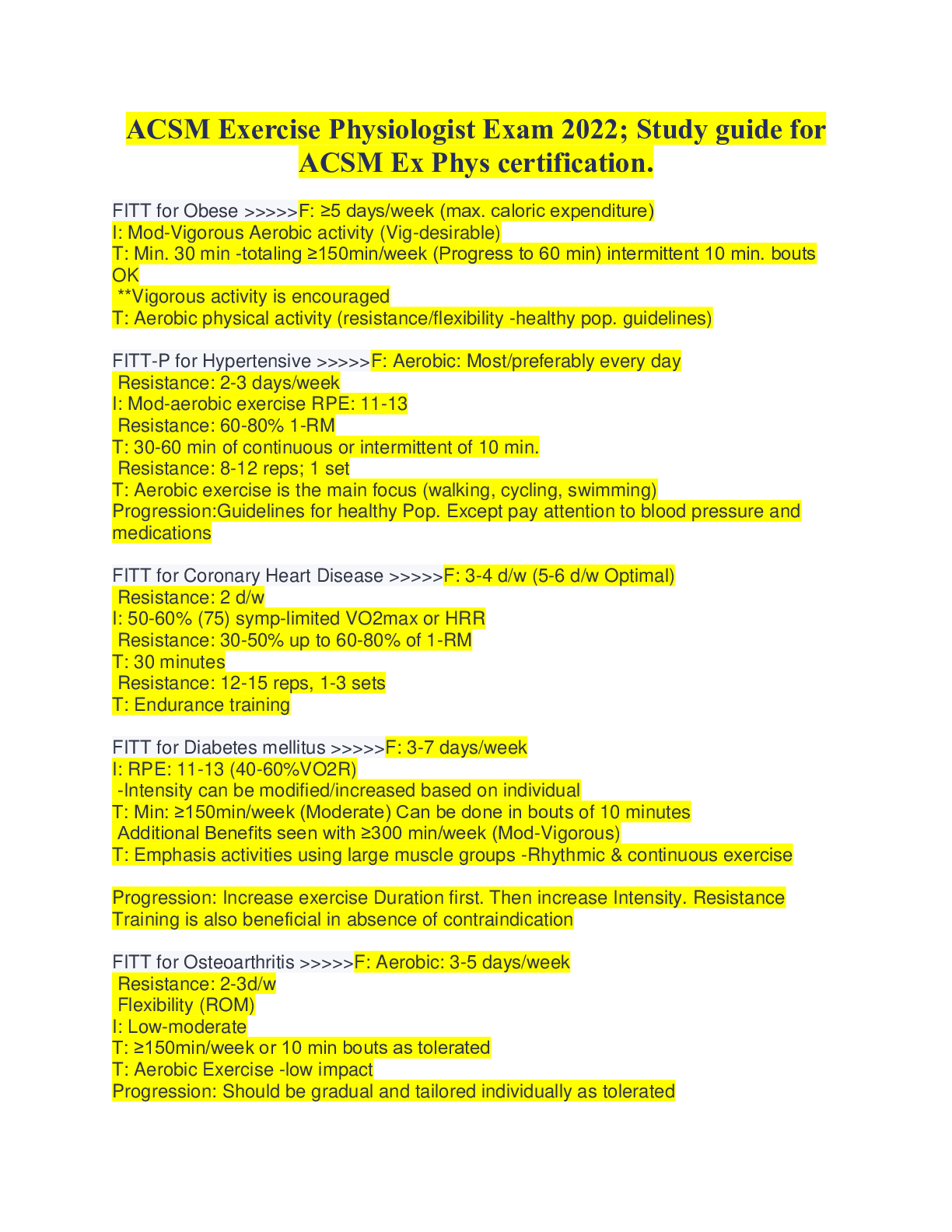
Reviews( 0 )
Document information
Connected school, study & course
About the document
Uploaded On
Jan 10, 2023
Number of pages
9
Written in
Additional information
This document has been written for:
Uploaded
Jan 10, 2023
Downloads
0
Views
91




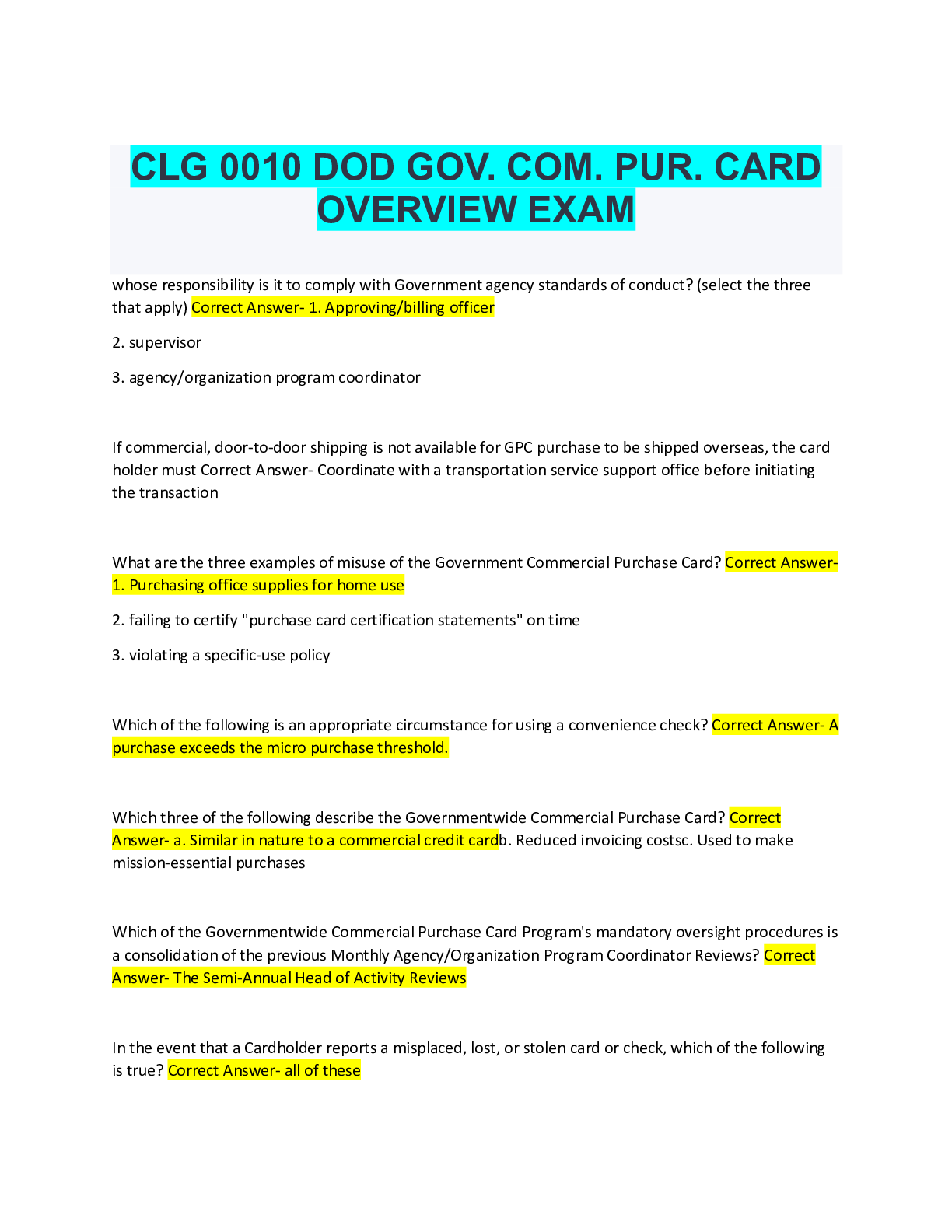


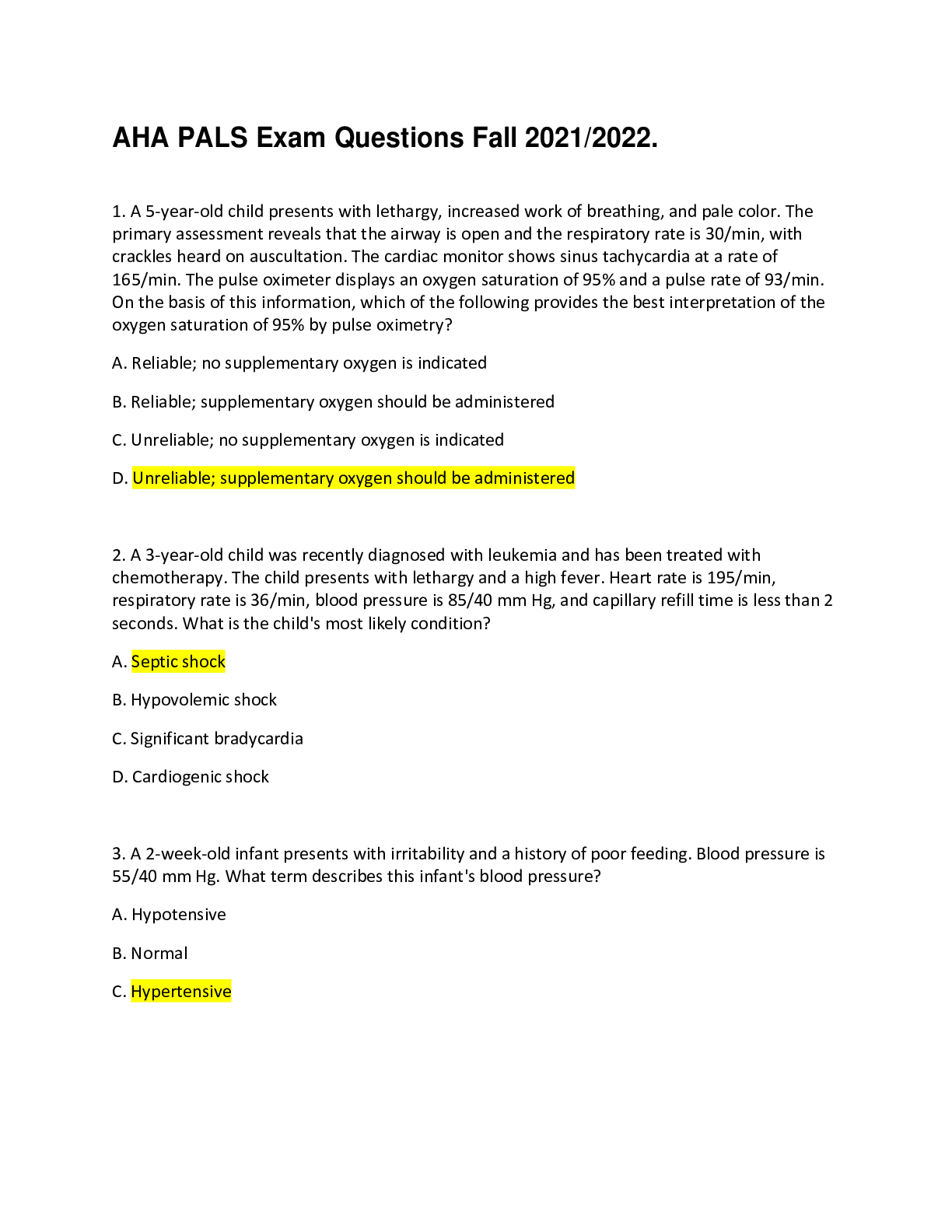

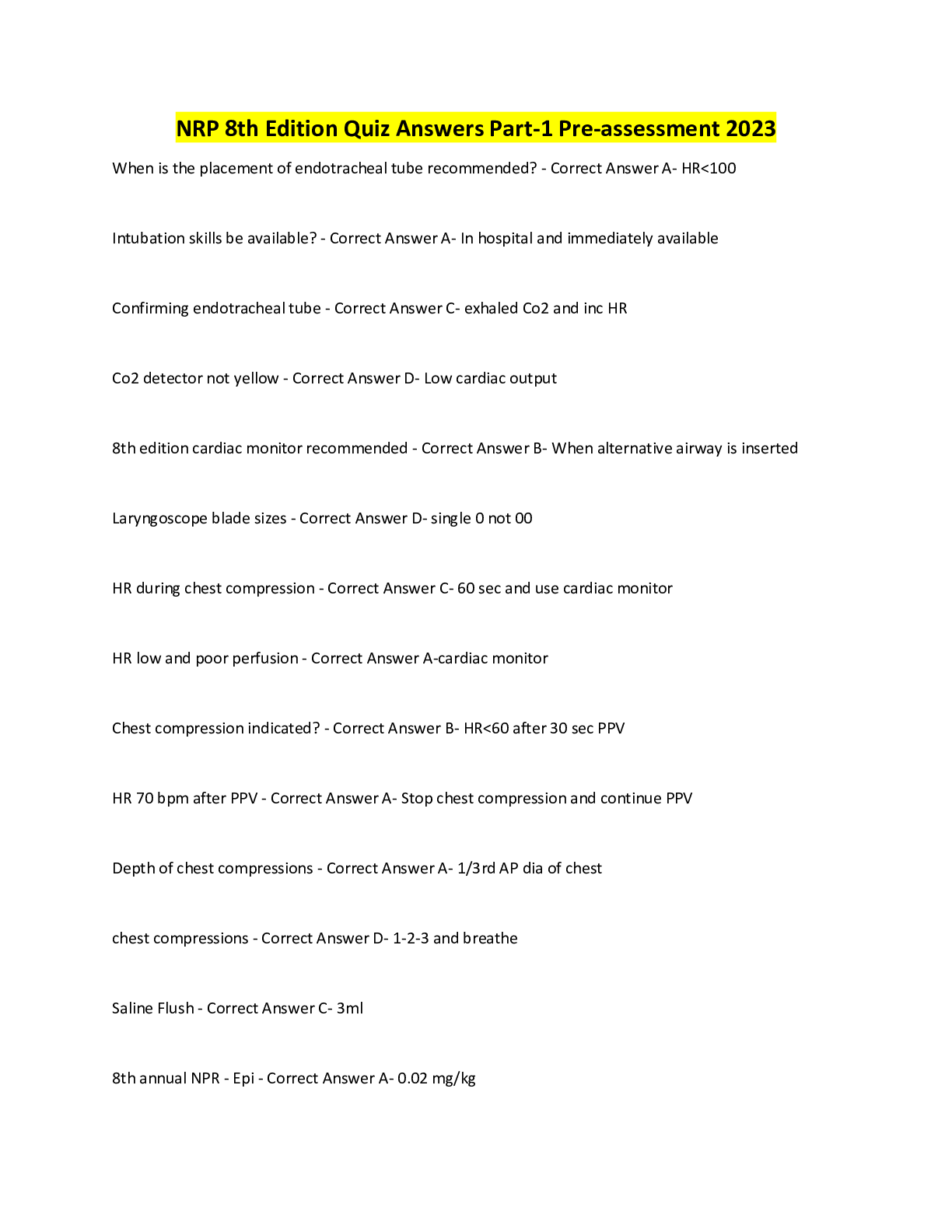

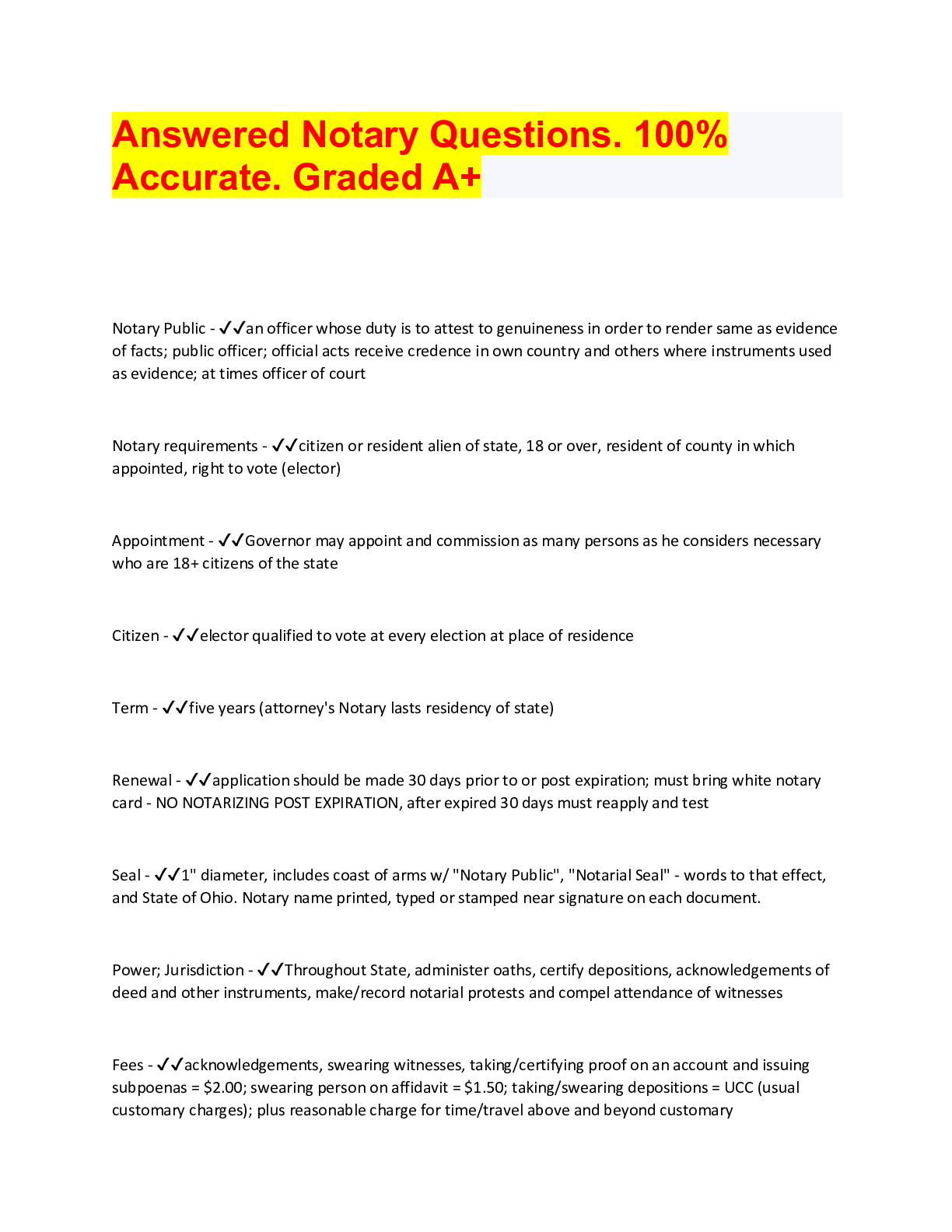

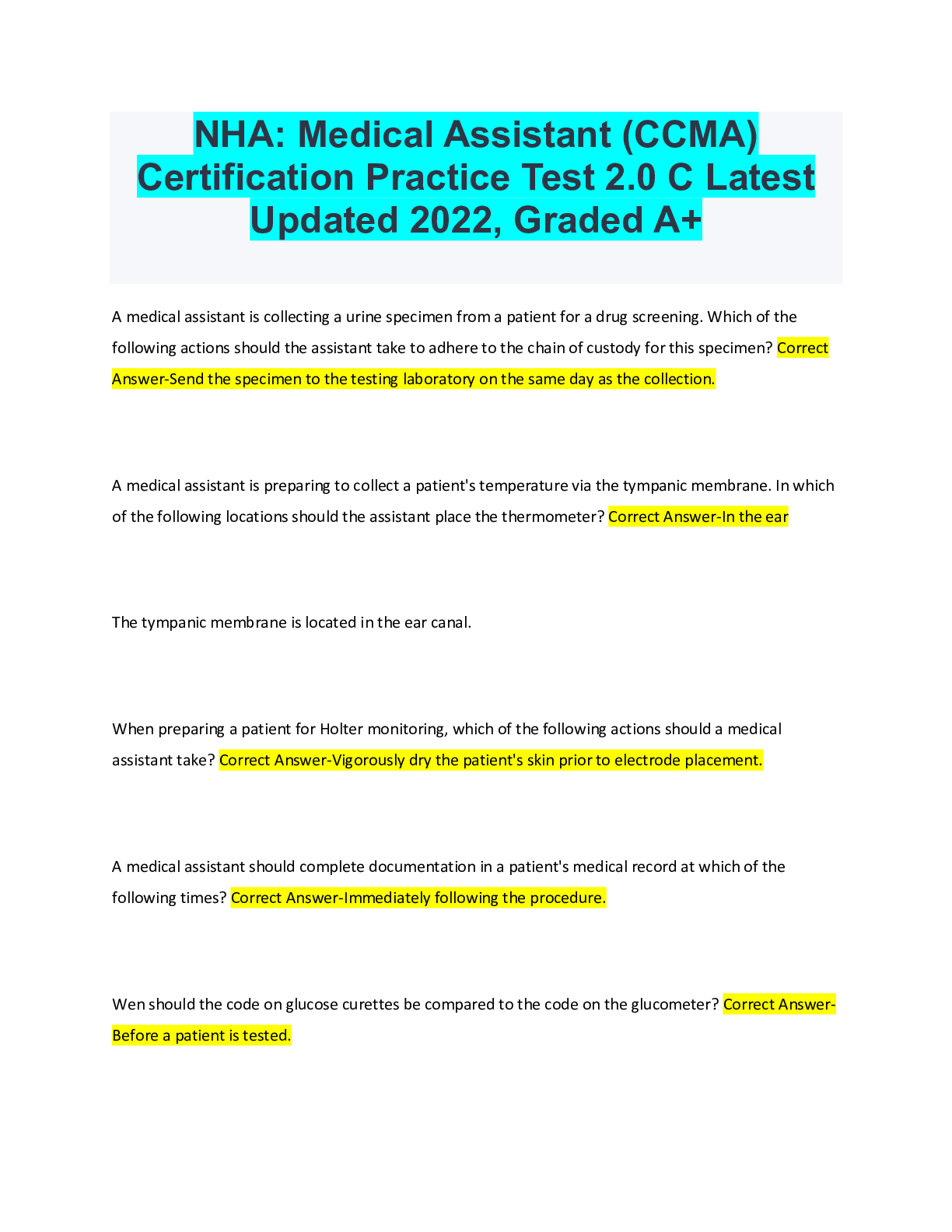
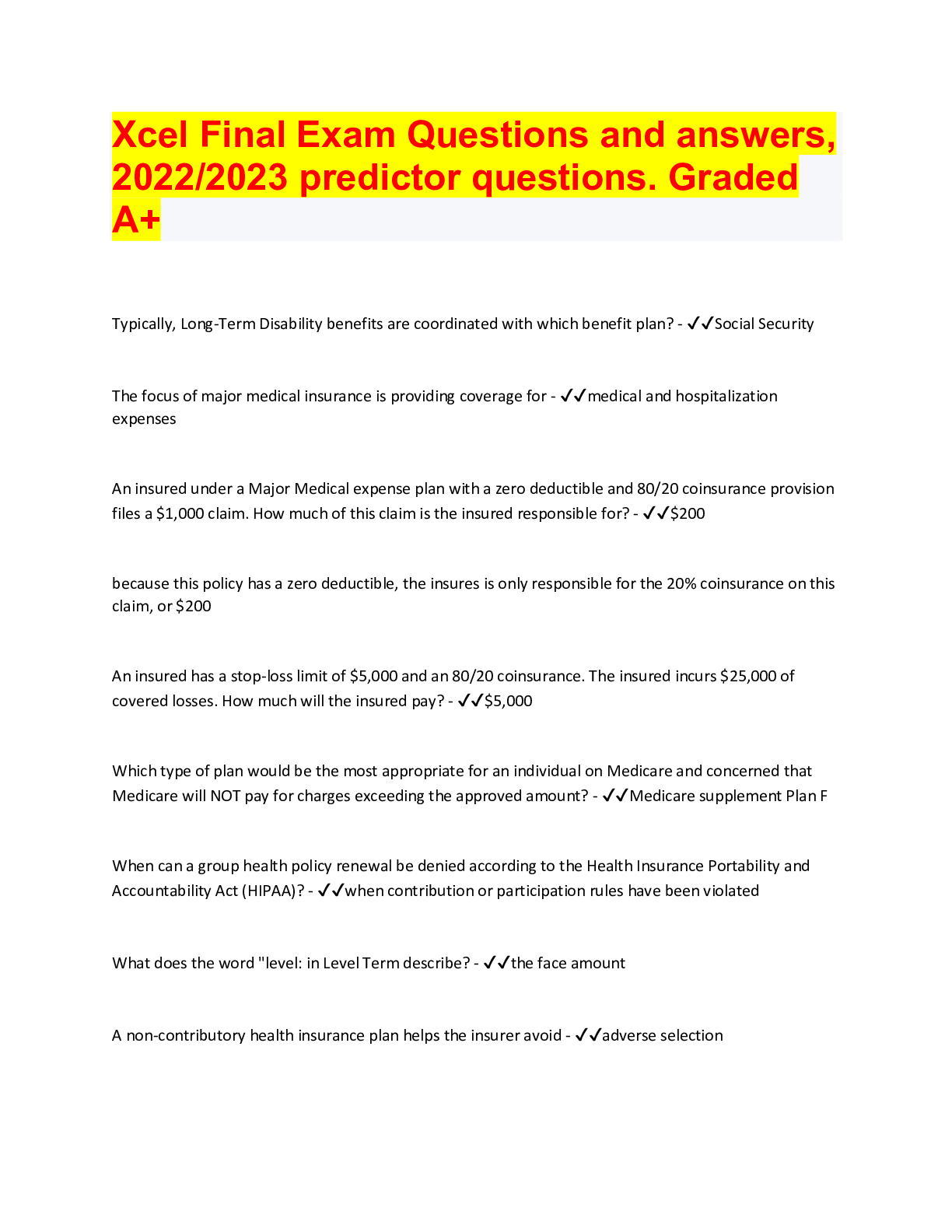
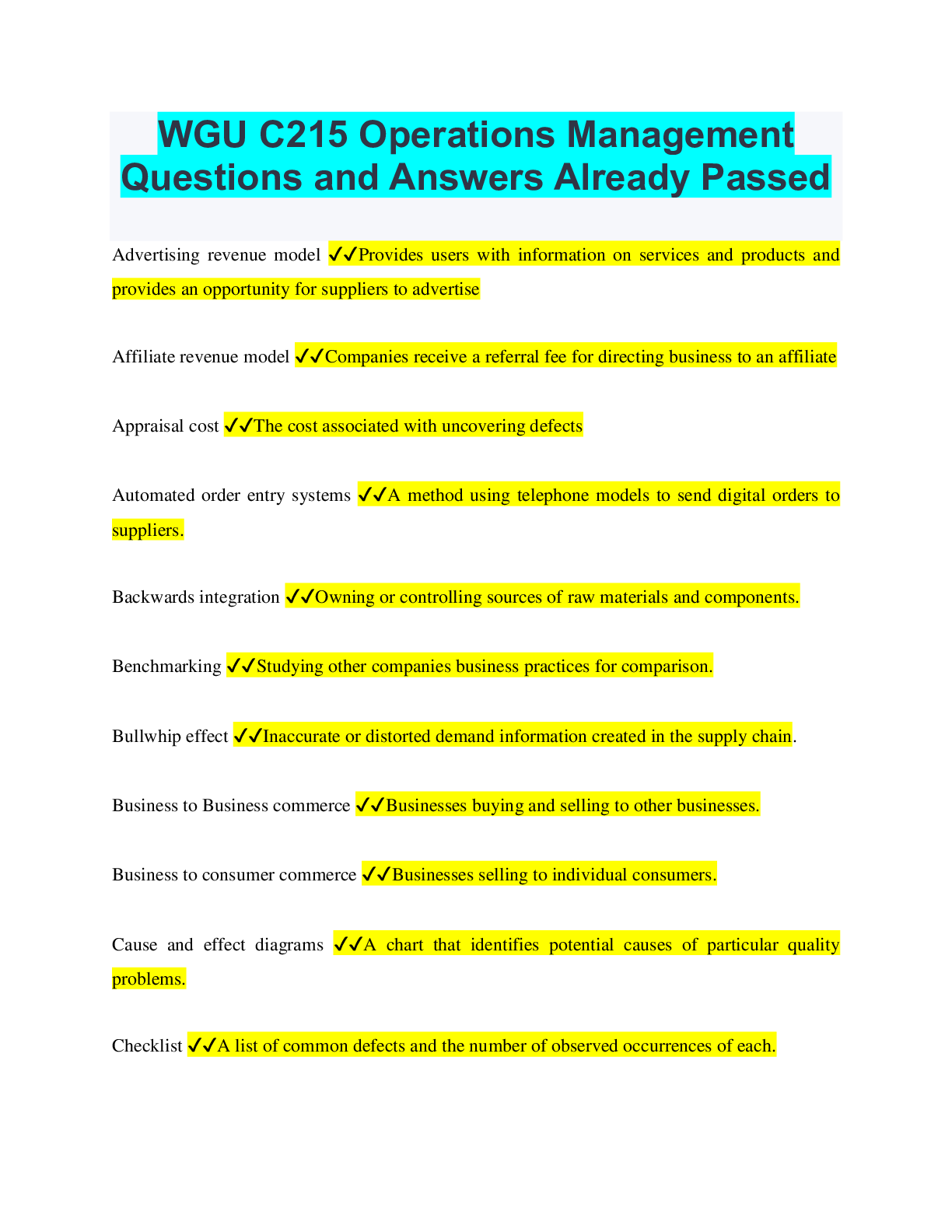
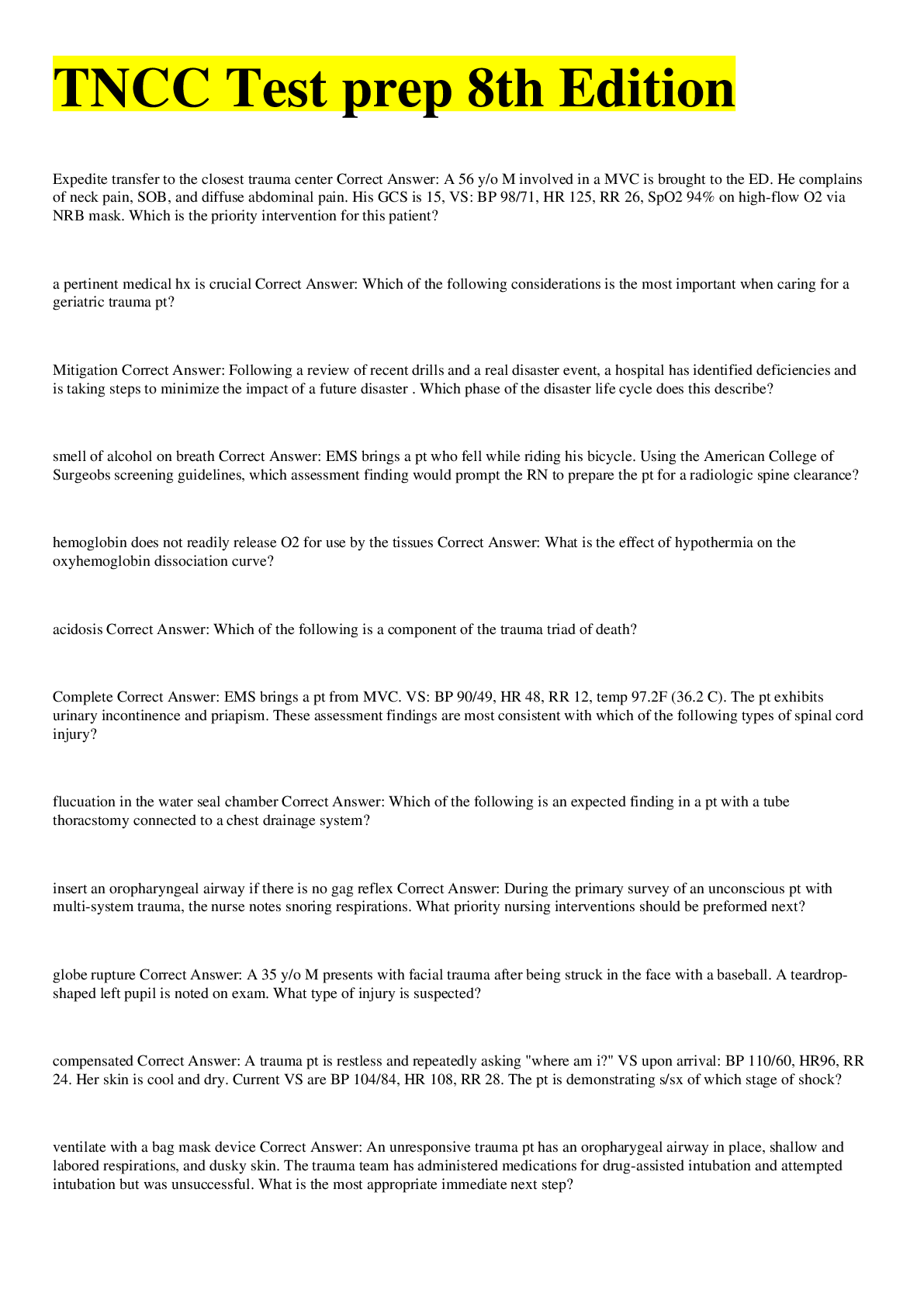

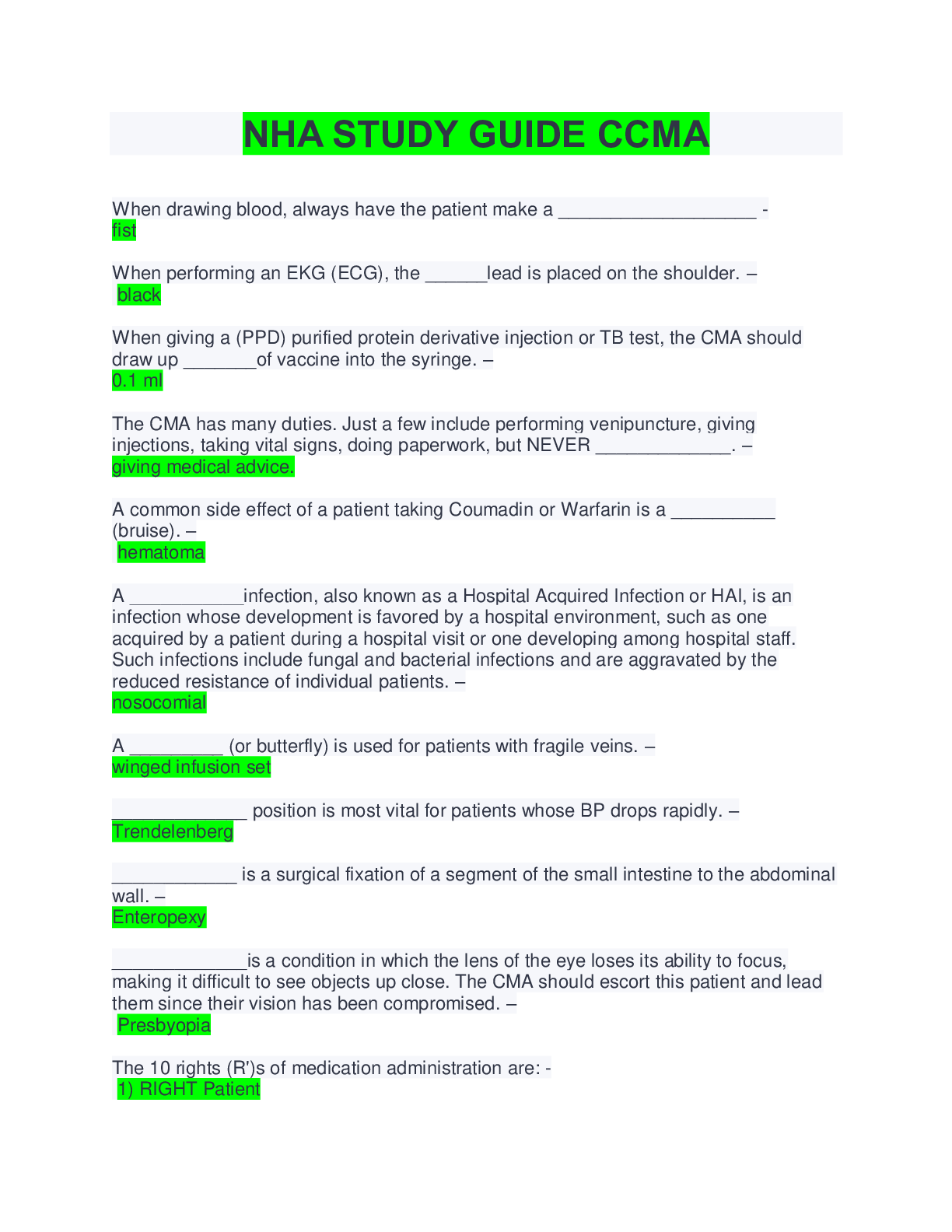
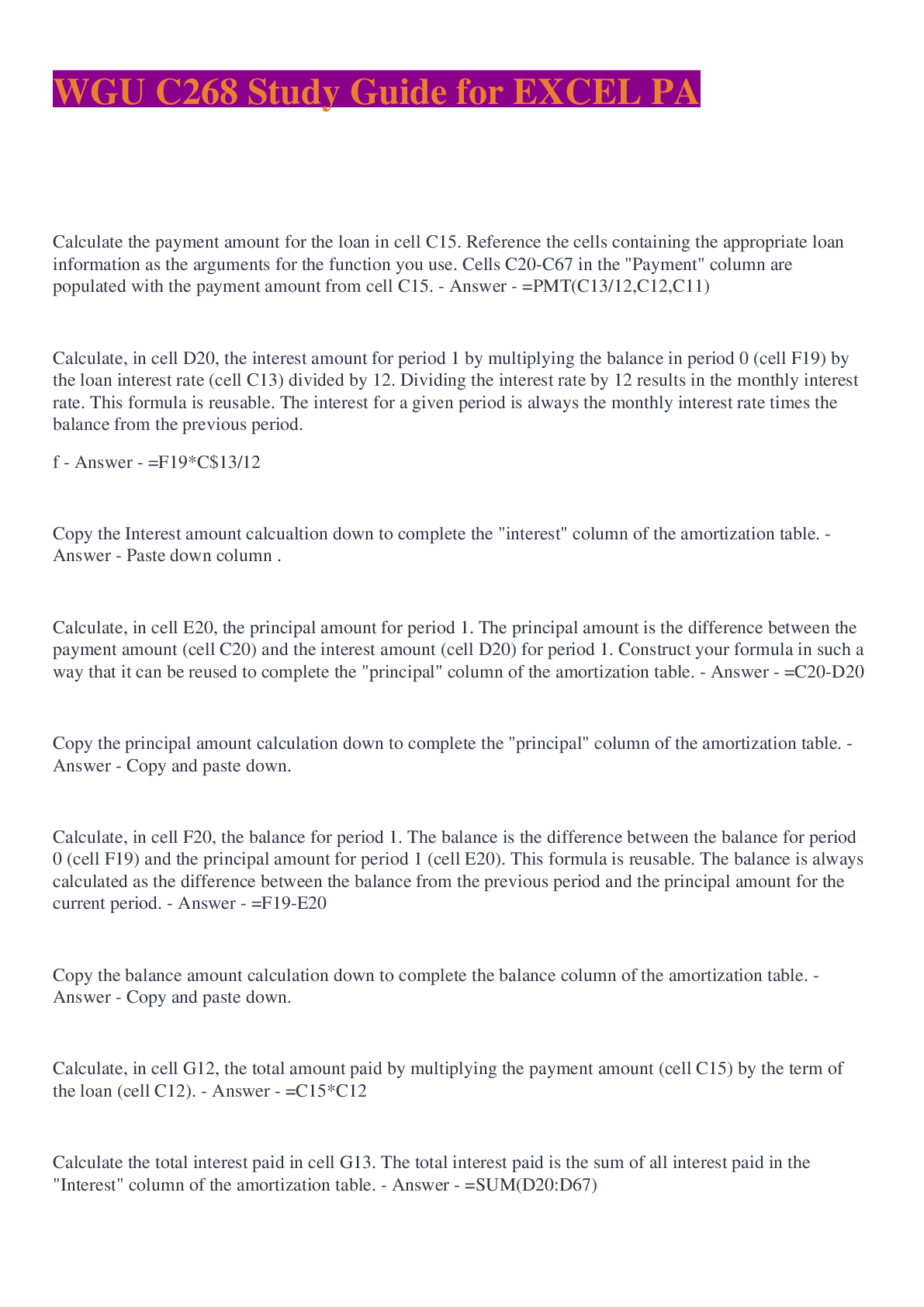
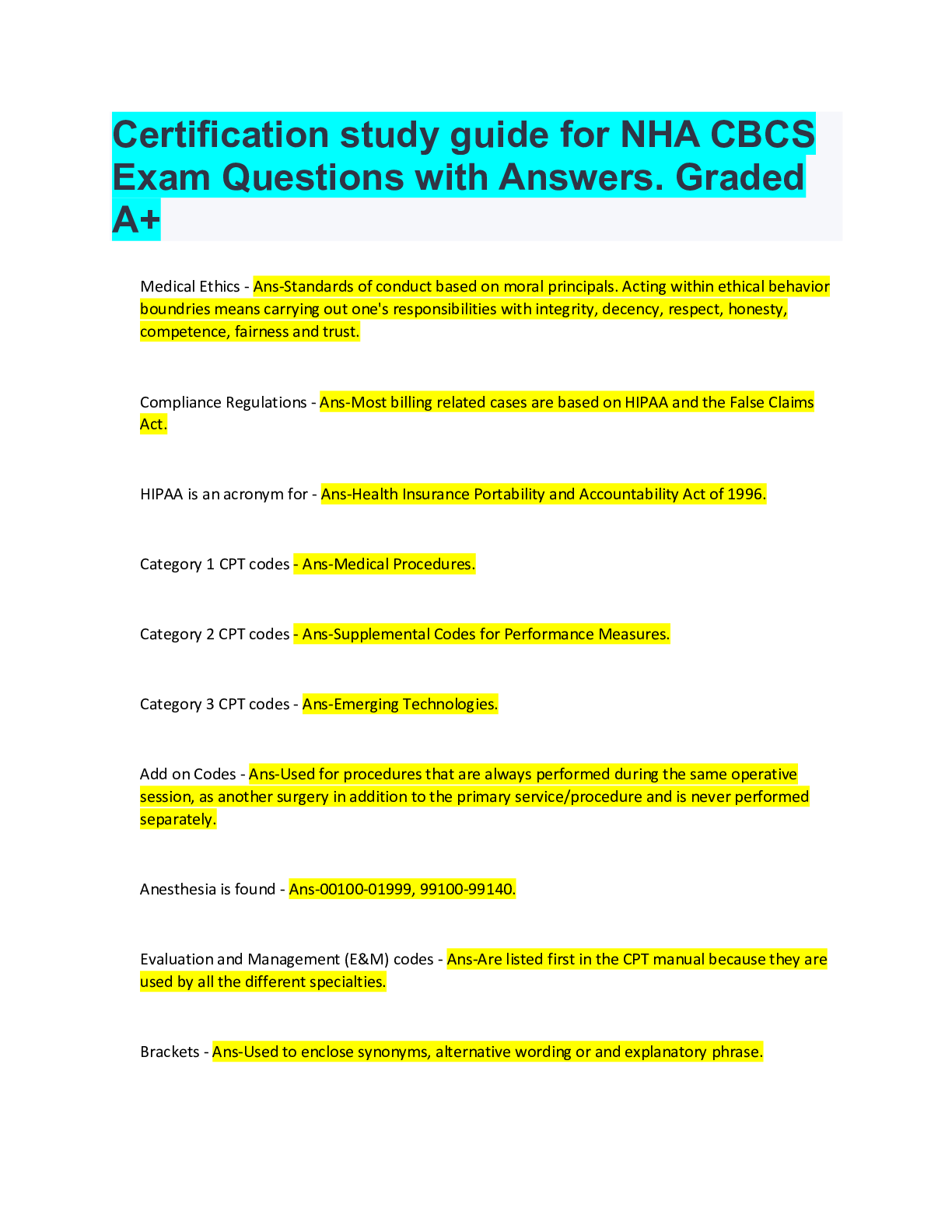
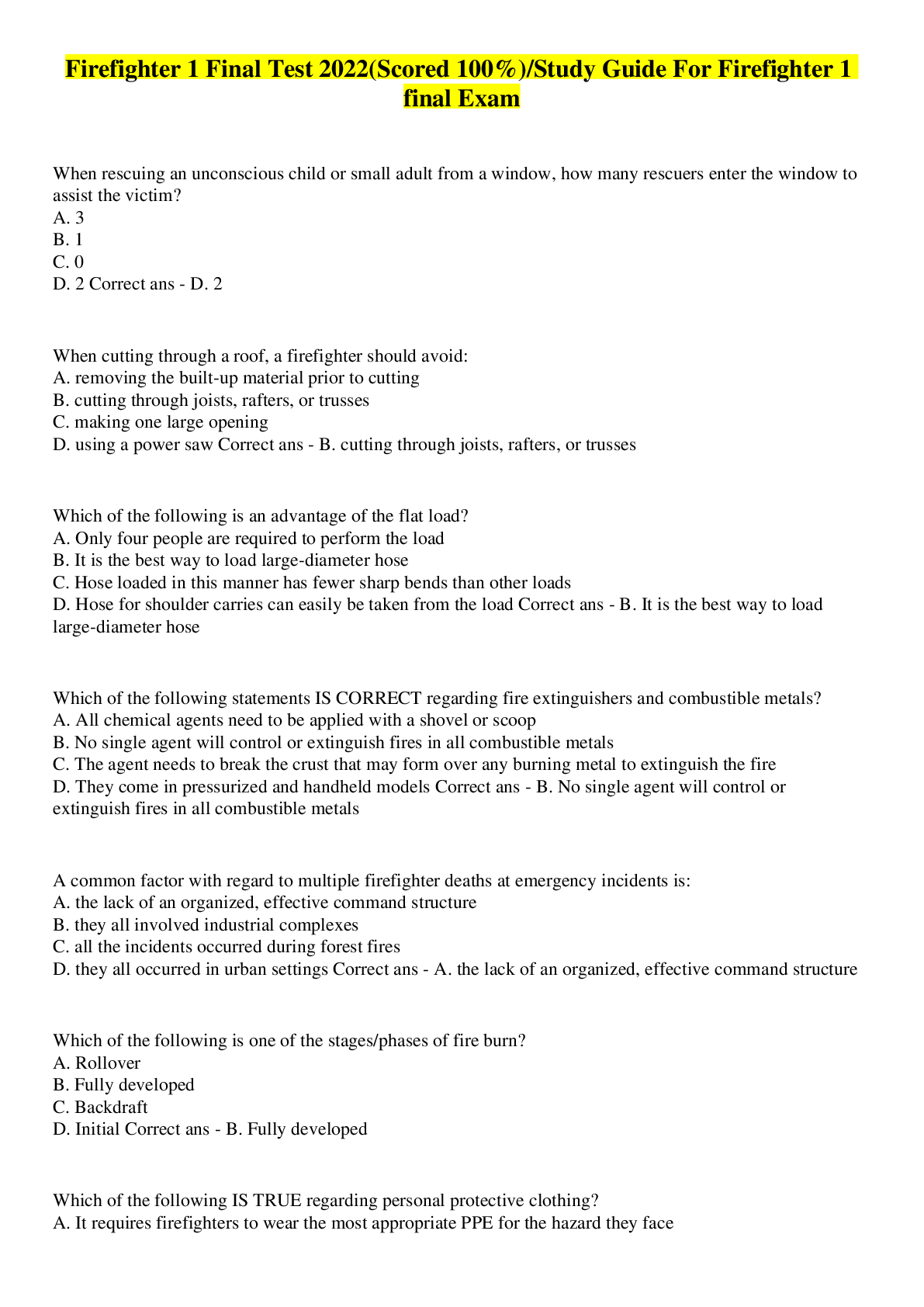
.png)
.png)
.png)
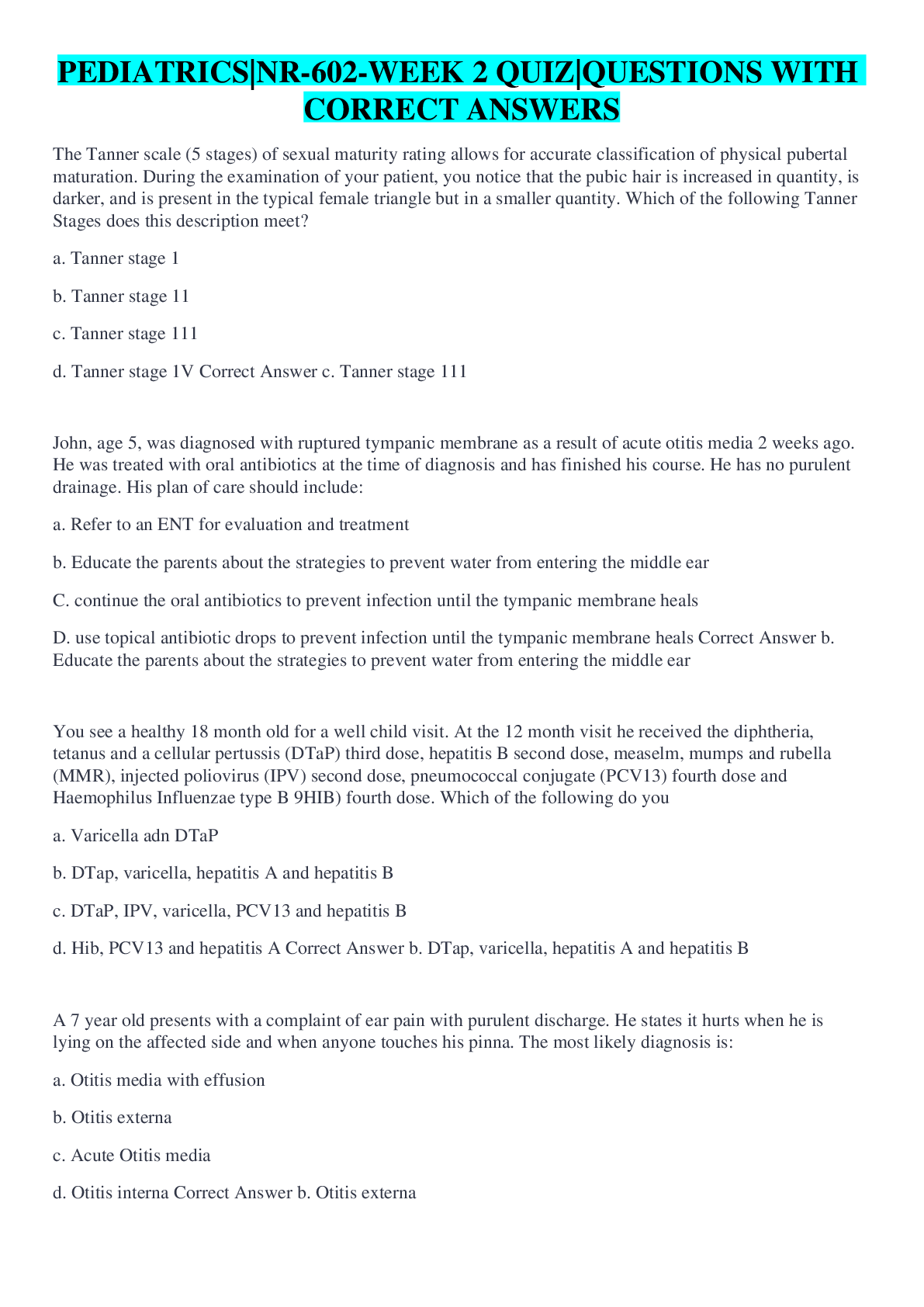
 (1).png)

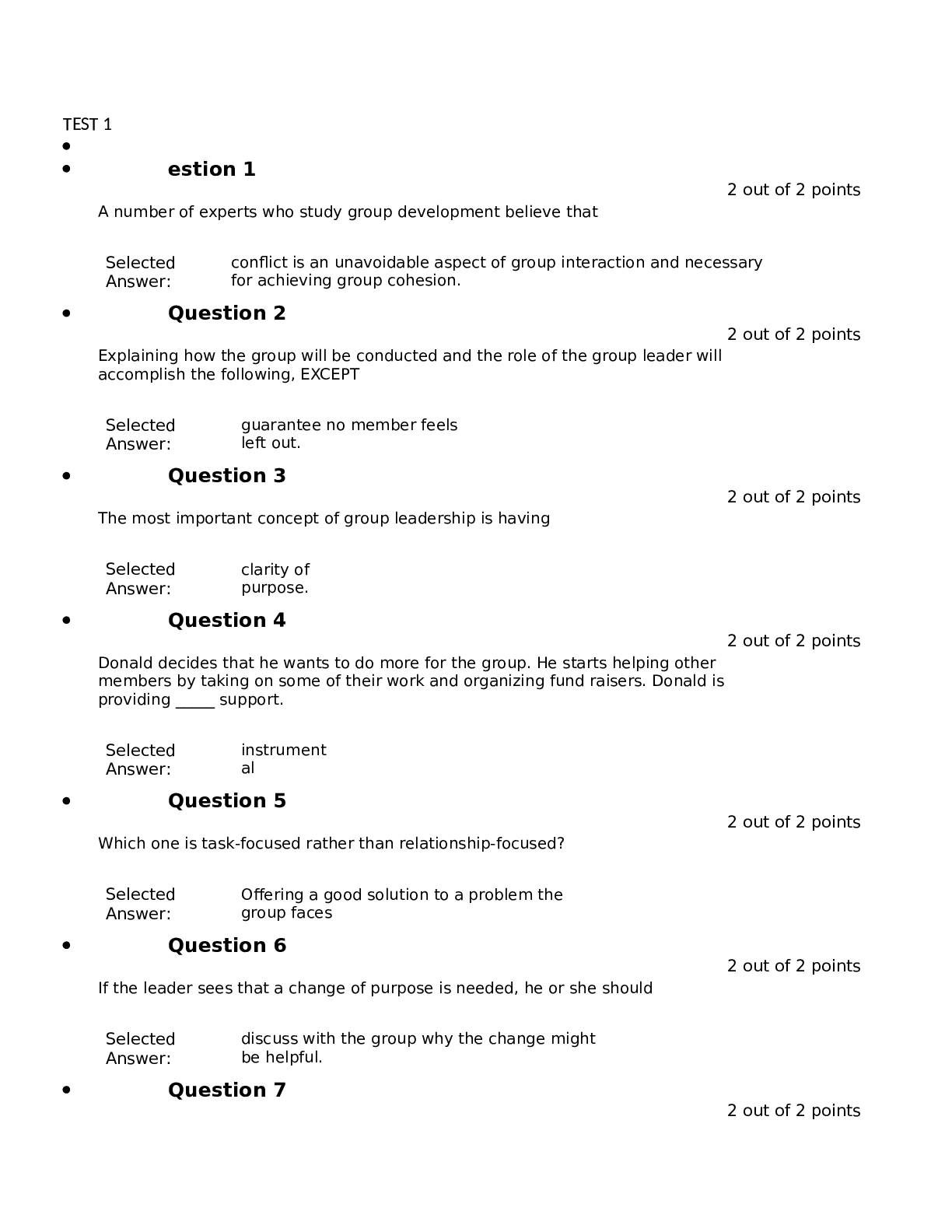
.png)
